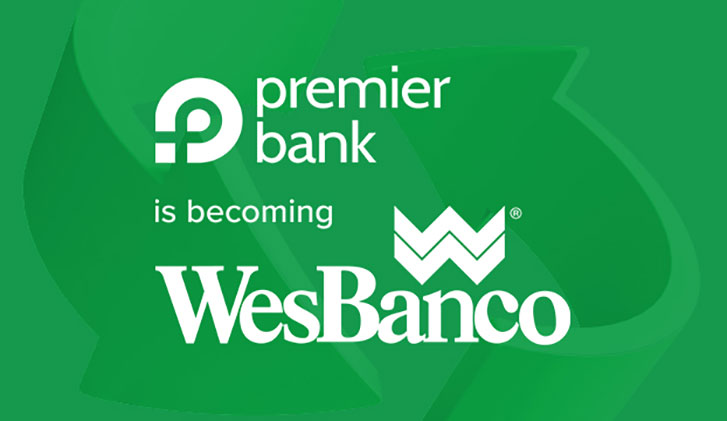NOTICE: Internet Explorer was retired by Microsoft on June 15th, 2022 and is no longer supported. This could change how you access Online Banking.
Due to weather, many banking centers have delayed openings. Please call ahead before visiting your branch.
Using Credit

From your perspective, using credit means being able to pay for things you want or need when you don’t have enough cash to cover the purchase, or don’t want to pay in full all at once.
Your part of the bargain is repaying the lender the amount of money you’ve borrowed, plus interest, calculated as a percentage of the amount you owe.
Loans and credit cards are the types of credit most people use most often. Loans, which let you borrow a lump sum of money, have a longer history. But credit cards, which give you revolving access to a fixed amount of money, called your credit limit, have become a way of life for a majority of people. Revolving access means that as soon as you repay an amount you’ve borrowed, you can use it again.
Available Credit
Creditors are willing, and often eager, to advance you the principal, or the money you use, because they collect a fee, called a finance charge, as you repay. Creditors figure the finance charge by adding a percentage of the principal to the amount you owe.
The percentage, called the interest rate, varies, depending on the type of credit you’re using and the amount of competition the creditor has in attracting your business. It’s often linked to the interest rates that are current in the economy at large, particularly the prime rate, which lenders use as a benchmark rate. In general, though, finance charges on credit cards are figured at a higher—sometimes much higher—rate than those on many loans.
Other factors influence the finance charges you pay, including your credit reputation or assumptions a potential creditor makes about you. If a creditor believes there’s a risk that you may default, or fail to repay, the rate you’ll have to pay for credit may be higher than someone who seems to pose less risk.
Evaluating Credit UsePeople use credit, or their access to credit, in different ways, and some of those choices tend to work better than others. Here are some of the credit issues you may want to consider:
|
Two Faces of Credit
Credit has enabled many people to live better by paying for goods or services as part of their regular living expenses rather than having to wait until they could afford to make the purchase. It’s more available today to a broader range of people than it was in the past.
In fact, the majority of Americans use credit in one form or another: about 78% of US households have credit cards, most people who buy homes have a mortgage loan, and about 60% of college students (or their parents) use loans to help them pay tuition and other expenses.
But credit does have a downside. Although many people use credit wisely, some end up owing more than they are able to repay. It may be because they have lost their jobs or are burdened by major medical expenses. It may be that they’ve been unrealistic about what they can afford to charge, or that they don’t realize how deeply in debt they are. Whatever the reason, the consequences are costly and put access to future credit at risk.
Credit Partners
Two parties are involved in making credit work, the consumer, or user of credit, and the creditor, or supplier of credit. And unless you have informal arrangements with family or friends, getting credit usually involves an agreement you make with a financial institution such as a bank or a credit union.
Customarily, the partners agree on the amount of credit available and the conditions under which it will be repaid, as well as the fee the creditor will the charge for advancing the money. Since credit is a common phenomenon, those agreements are generally standardized. But that doesn’t mean that some credit arrangements won’t work better for you than others.
It’s important to understand the details, especially what the credit will cost, and to do comparison shopping for the best terms. After all, any creditor you apply to will check to see whether you’re a good risk before making money available to you.
Arthur Morris originated the installment loan. His Morris Plan, the first to make credit available to the average citizen, began in 1916 despite common wisdom that lending money to working people was doomed to failure. Over 100 years later, it’s hard to imagine how the American economy could function without credit.
Credit Regulation
Legitimate credit providers are regulated by the US government and the states where they operate. The laws, which have evolved over time, require the lenders to offer credit on an equal basis, disclose credit terms and conditions, and avoid unfair and deceptive practices, including hidden fees and unreasonable expenses.
The law also governs liability for unauthorized use of your credit card and details procedures for resolving billing errors and other disputes.
However, it’s your responsibility to read the small print that explains credit’s terms and conditions and to safeguard your personal information so that unauthorized people can’t use your accounts.
Content is for informational purposes only and is not intended to provide legal or financial advice. The views and opinions expressed do not necessarily represent the views and opinions of WesBanco.
While we hope you find this content useful, it is only intended to serve as a starting point. Your next step is to speak with a qualified, licensed professional who can provide advice tailored to your individual circumstances. Nothing in this article, nor in any associated resources, should be construed as financial or legal advice. Furthermore, while we have made good faith efforts to ensure that the information presented was correct as of the date the content was prepared, we are unable to guarantee that it remains accurate today.
Neither Banzai nor its sponsoring partners make any warranties or representations as to the accuracy, applicability, completeness, or suitability for any particular purpose of the information contained herein. Banzai and its sponsoring partners expressly disclaim any liability arising from the use or misuse of these materials and, by visiting this site, you agree to release Banzai and its sponsoring partners from any such liability. Do not rely upon the information provided in this content when making decisions regarding financial or legal matters without first consulting with a qualified, licensed professional.
Find a Location Near You!
WesBanco operates branches and offices in 8 states. Over the past decade, we have built a national reputation as a safe, sound and profitable bank holding company that always strives to do better by its customers.
Locations




